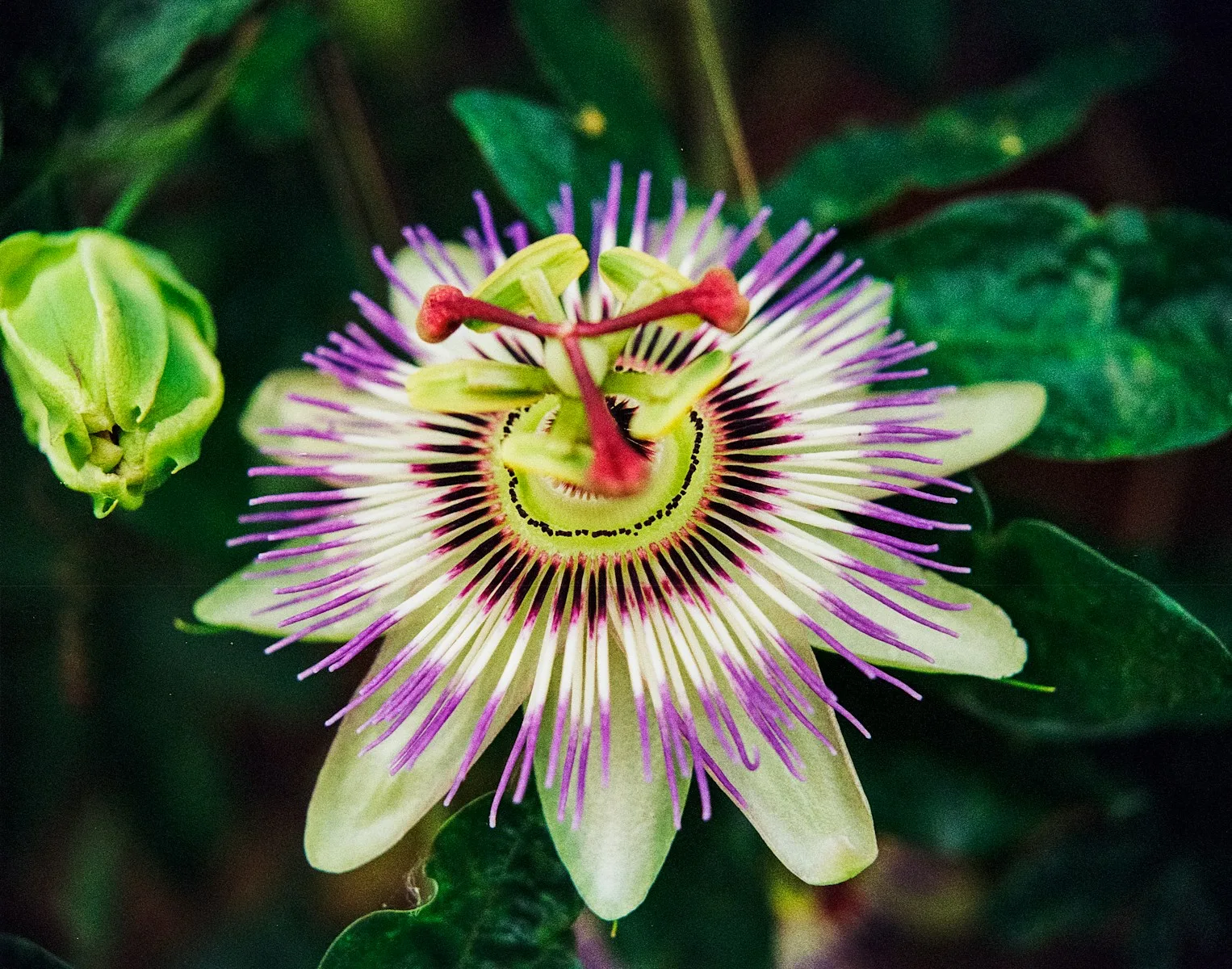Passion fruit is a tropical delight, known for its tangy, aromatic flavor and stunning flowers. Growing your own passion fruit plant can transform your garden into a lush, productive paradise. Whether you’re starting from seed or planting a seedling, this guide will walk you through everything you need to know about how to grow passion fruit plants successfully.
Why Grow Passion Fruit?
Passion fruit (Passiflora edulis) is more than just a delicious fruit—it’s a gorgeous climbing vine that thrives in warm climates. It grows quickly, produces an abundance of fruit, and adds beauty to your garden with its intricate purple and white flowers. With the right care, passion fruit plants can bear fruit within 6–12 months, making them a rewarding choice for gardeners.
How to Plant Passion Fruits
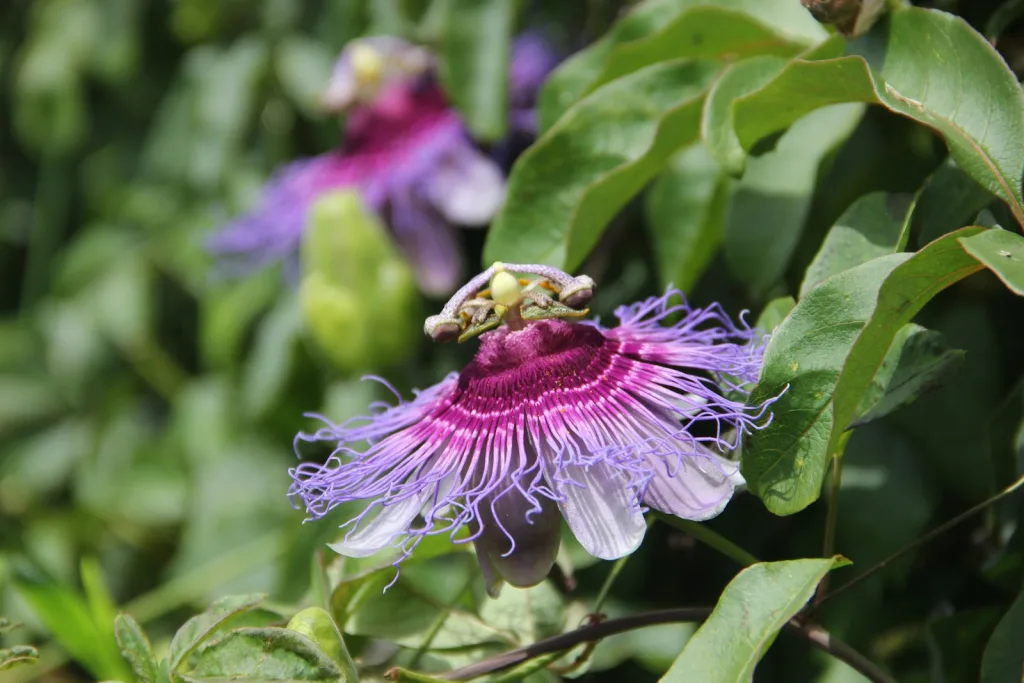
1. Choose the Right Variety
There are two main types of passion fruit to consider:
- Purple Passion Fruit (Passiflora edulis): Prefers cooler subtropical climates and is well-suited for USDA zones 9–11.
- Yellow Passion Fruit (Passiflora edulis flavicarpa): Thrives in tropical regions and is more heat-tolerant. The yellow variety typically produces larger fruits, but the flavor profile may be slightly less intense compared to purple passion fruit.
2. Find the Perfect Location
Passion fruit plants need plenty of sunlight and space to climb. Choose a location with:
- Full Sun: At least 6–8 hours of direct sunlight daily.
- Well-Draining Soil: Passion fruit prefers slightly acidic soil with a pH of 6.0–7.0. If your soil is heavy, amend it with compost or sand to improve drainage.
Passion fruit vines can grow along fences, trellises, or even as natural screens to create privacy in your garden.
3. Planting Passion Fruit Seeds or Seedlings
- From Seeds:
- Scoop seeds from a ripe passion fruit and rinse off the pulp.
- Allow seeds to dry for a day before planting them 1/2 inch deep in pots or directly in the ground.
- Keep the soil consistently moist, and germination should occur within 10–20 days.
- From Seedlings:
- Dig a hole twice the size of the root ball, ensuring the roots have plenty of space.
- Place the seedling in the hole and backfill with enriched soil. Water thoroughly to settle the soil.
4. Support the Vines
Passion fruit plants are vigorous climbers and require a sturdy trellis, fence, or arbor to grow on. Ensure the support structure is durable enough to handle the weight of the vines and fruit, as passion fruit can grow up to 20 feet long. Over time, these vines can create stunning green canopies or archways in your garden.
Caring for Your Passion Fruit Plant
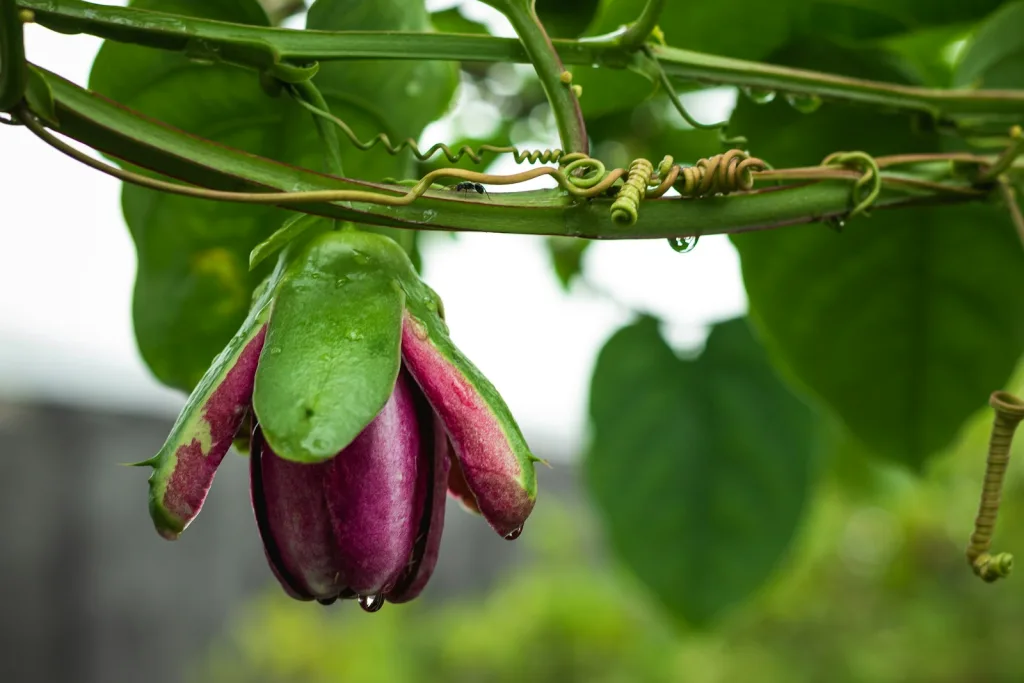

Watering
Consistent watering is crucial for healthy growth and fruit production.
- Water deeply 2–3 times per week, keeping the soil evenly moist but not soggy.
- During hot or dry periods, increase watering to prevent stress. Use mulch to retain soil moisture and reduce water evaporation.
Fertilizing
Feed your passion fruit plant regularly for optimal growth.
- Use a balanced fertilizer like 10-5-20 every 4–6 weeks during the growing season.
- Fertilizers high in potassium support flowering and fruiting, while nitrogen helps with vigorous vine growth.
- If your plant is in a container, consider using slow-release fertilizers to reduce the need for frequent feeding.
Pruning and Maintenance
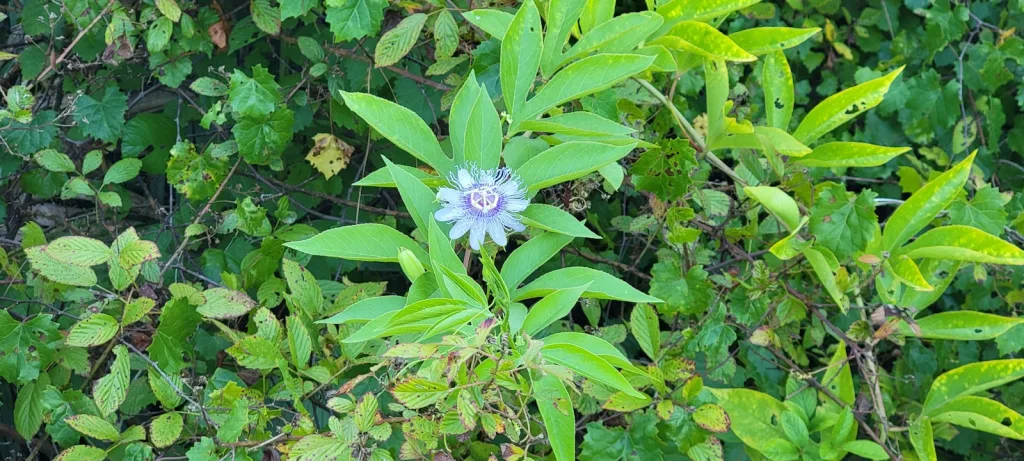
Pruning is essential to control the growth of your passion fruit vine and encourage fruit production.
- Prune in late winter or early spring to remove dead, weak, or overcrowded branches.
- Trim back vines to maintain shape and allow sunlight and airflow to reach the inner parts of the plant. Regular pruning also helps prevent pest infestations and fungal diseases.
Pollination
Many passion fruit flowers are self-fertile but rely on pollinators like bees to set fruit. If pollinators are scarce, you can hand-pollinate by transferring pollen from one flower to another with a small brush or cotton swab.
Dealing with Cooler Weather
Passion fruit plants thrive in warm climates and are sensitive to frost.
- In-Ground Plants: Mulch heavily around the base to insulate roots and cover the plant with frost cloth during cold snaps.
- Potted Plants: Move containers indoors or into a greenhouse if temperatures drop below 50°F. Reduce watering in winter, as the plant’s growth slows.
Common Problems When Growing Passion Fruit
1. Pests
Passion fruit plants can attract aphids, whiteflies, and fruit flies.
- Use insecticidal soap or neem oil to treat infestations.
- Companion planting with marigolds or nasturtiums can help repel pests naturally.
2. Fungal Diseases
Root rot and powdery mildew can occur in overly wet conditions.
- Ensure proper drainage and avoid overwatering.
- Improve airflow by pruning dense growth and spacing plants adequately.
3. Poor Fruit Set
Lack of pollination or excessive nitrogen in the soil can lead to poor fruiting. Encourage pollinators with flowering companion plants and avoid over-fertilizing.
Harvesting Passion Fruit
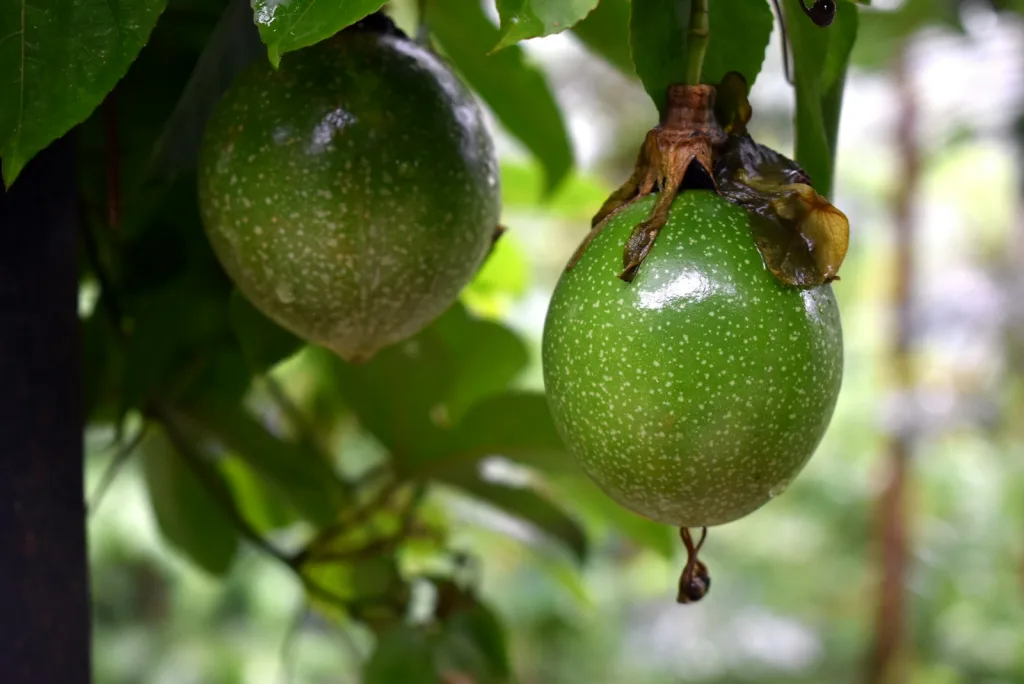
Passion fruits are ready to harvest when they turn from green to their mature color (yellow or purple). Fully ripe fruit often falls from the vine naturally.
- Collect fallen fruit immediately to prevent spoilage.
- Store passion fruit at room temperature for up to a week or refrigerate for extended freshness.
Creative Uses for Passion Fruit in the Kitchen
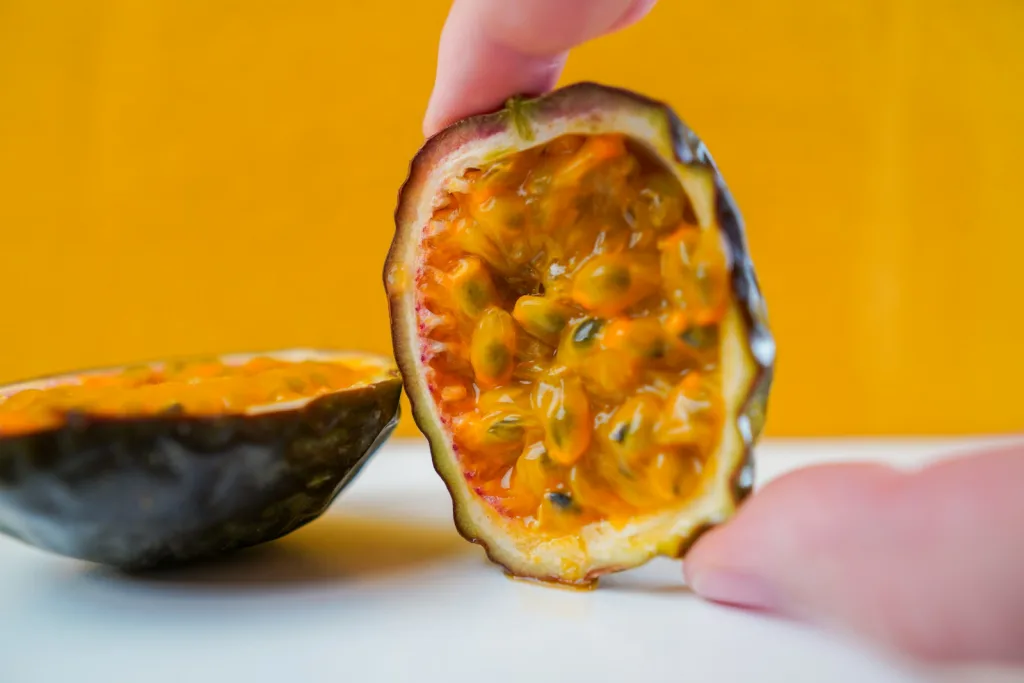
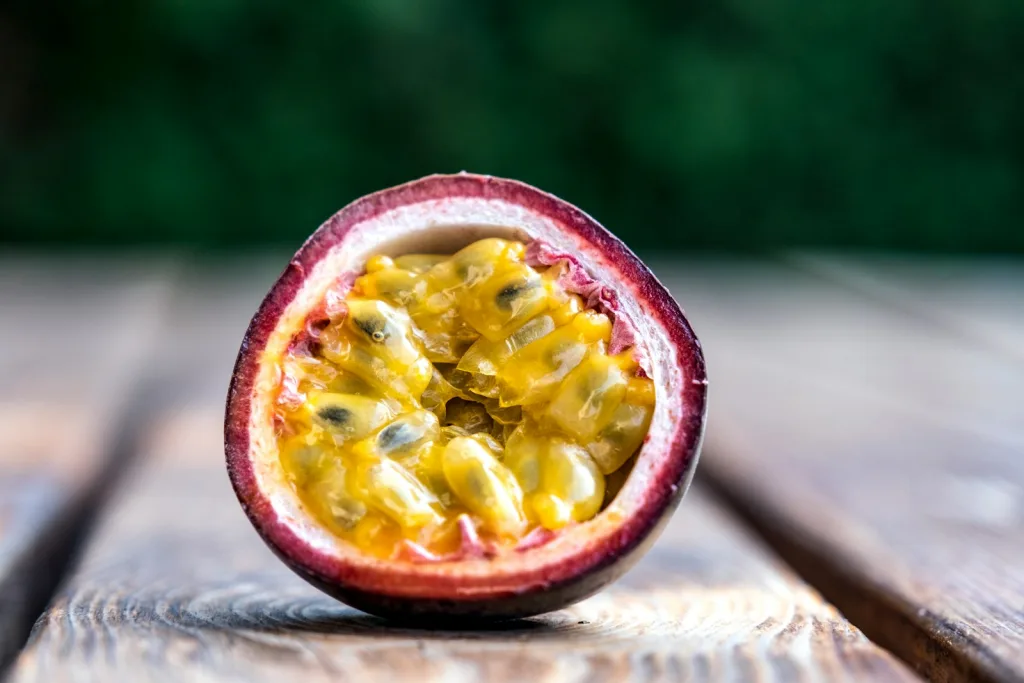
Passion fruit isn’t just for eating fresh—it’s a versatile ingredient in both sweet and savory dishes. Use the pulp to:
- Make passion fruit juice, cocktails, or smoothies.
- Top desserts like cheesecakes or pavlovas for a tangy twist.
- Add to marinades for fish or chicken.
- Stir into yogurt or oatmeal for a tropical breakfast.
Learning how to grow passion fruit plants is an exciting journey for any gardener. By providing the right environment, regular care, and a sturdy support structure, you can enjoy lush growth and bountiful harvests. Whether you’re starting from seeds or seedlings, passion fruit plants offer a blend of beauty and utility that’s hard to beat. Start planting today and transform your garden into a tropical paradise.

